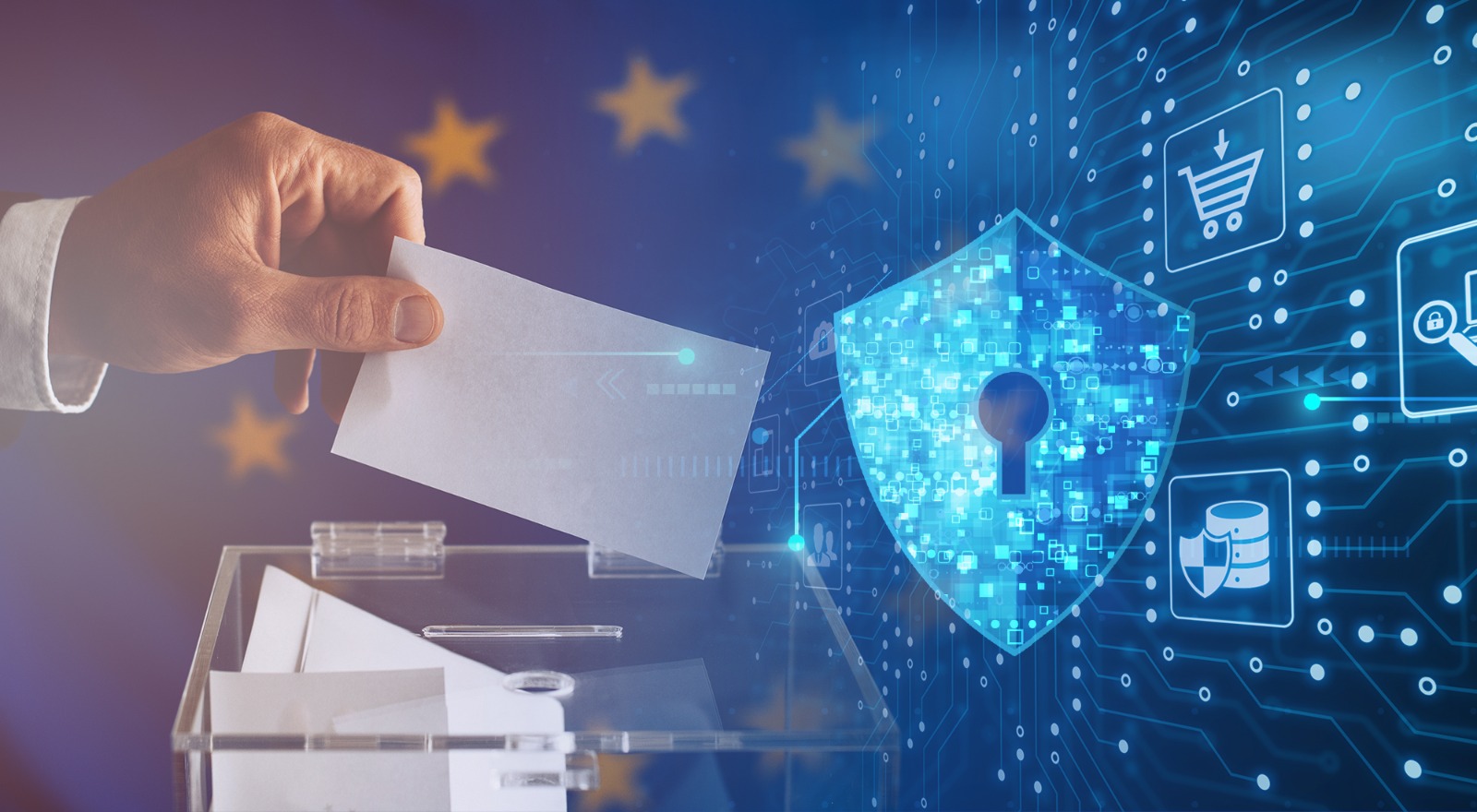The European Union (EU) will hold elections in 2024, so the current year will be important for the European Commission in implementing its agenda. The last few years have not been easy for the Commission, the executive branch of the EU that has been led by President Ursula von der Leyen since 2019. The COVID-19 pandemic and the war in Ukraine have led to a battered economy and difficult challenges for the continental government. The EU has decided, however, that after years of coordinating the interests of individual member states, they would take the lead. This turn toward strategic autonomy has seen Europe show unity, both in confronting Russian President Vladimir Putin and in coordinating economic policies, especially in the digital and technology sectors
Twin crises
The response to the COVID-19 pandemic paralyzed many economic sectors such as tourism, which contributes to 10% of GDP in the EU.[1] Lockdowns and the curtailing of international travel devastated countries such as Spain, where tourism accounted for 12.4% of GDP in 2019.[2] The Commission reacted by advocating for digital solutions such as tracking apps, meant to help trace points of contagion, procuring vaccines, and helping implement the “COVID green pass”, an interoperable system in which citizens were forced to demonstrate to public authorities in the EU whether they were vaccinated or had recently tested negative for the virus.
The Commission also supported a €2 trillion post-pandemic stimulus package, but despite this investment, the economic recovery has been sluggish with some experts predicting a recession in the next year.[3] An important tenet of the Commission’s strategy has been to tie the recovery funds to projects that will help transform Europe into a digital and green economy.[4] The response to the pandemic highlighted the lack of investment in the digital sector — in 2019, only 44% of European households were connected to optical-fibre networks[5] — and put the digital infrastructure of EU countries and digital supply chains to test. Lockdowns caused more people to have to work or study from home, often with sub-optimal Internet speeds. It also caused a spike in demand that was unexpected by the tech industry. Microchip shortages also occurred, doubling the wait times from pre-pandemic years for devices such as laptops and tablets.[6]
The digital agenda of von der Leyen’s Commission when it first came to power was human-centric. The strategy of 2020’s “Shaping Europe’s Digital Future”[7] and 2021’s “Digital Compass”[8] prioritized better access to technology, the development of digital skills, competition and data governance, and protecting citizens against disinformation and cyber threats. Over the past three years, however, the industrial, trade, and foreign affairs agendas have become more and more interlinked, and the 2023 digital policy hopes to reduce the level of dependency of European countries and industries.
The Commission understands that its policies should not only bring economic prosperity to citizens by reducing barriers to trade and harmonizing provisions for a swift economic exchange, but should also protect against antagonistic actions such as cyberattacks by powers such as China that could compromise Europe’s ability to compete in global markets.[9]
The importance of the Chips Act
The last time legislation was proposed to counter the structural problems affecting the European security of supply was in 2013, but the plan did not work because it was unable to mobilize enough private investment.[10] In 2022, the Commission proposed the EU Chips Act,[11] which aims to relocate production facilities to European soil. The law enjoys the political support of all member states as EU countries cope with the economic shocks of the recent past and realize their position in the semiconductor value chain has deteriorated. The fallout with Russia has also driven home the realization that interdependence does not guarantee peace.
While the EU has a strong position in areas such as manufacturing equipment with giants such as the Dutch company ASML, it is relatively weak in Internet Protocol and design, and especially in the assemblage of chips. The Chips Act aims to bridge these gaps by strengthening Europe’s research and innovation capacities and reducing strategic risks, especially supply chain risks, and critical dependencies on third countries. The goal is for Europe to achieve 20% of global manufacturing capacity by 2030.[12]
This international rush to fund semiconductor facilities has put Europe at a crossroads. It must implement the Chips Act before increased interest in the semiconductor industry leads to an international subsidy race. The legislation mobilizes €43 billion ($45.85 billion),[13] which seems significant until you factor in the cost of a fabrication plant — up to €20 billion — and the amount other countries have invested: approximately $280 billion by the United States[14] and a whopping $450 billion by South Korea.[15] To make its investment pay off, the EU will try to target critical segments of the value chain in which it has a vulnerable position, such as chip design or testing, while maintaining leadership in areas it is recognized as a leader, such as semiconductor manufacturing equipment.
Fairness in innovation: The Artificial Intelligence Act and challenges to platform regulation
If opinion polls are to be believed, the EU Parliament will lean more to the right.[16] This new college of commissioners could challenge some of the provisions of the current Artificial Intelligence Act, potentially delaying implementation, and in an unlikely worst-case scenario, eliminating the fundamental-rights approach of the proposal completely. It is imperative then for the von der Leyen Commission to try and push through its flagship AI regulation, which was seen when it was first proposed in 2020 as an opportunity for the EU to replicate the success it had with the 2015 General Data Protection Regulation, which “enhanced data protection rights of individuals.”[17]
AI governance is advancing fast. The Council of Europe, a governmental international organization, is in the process of preparing the first international AI treaty, and the EU-U.S. Trade and Technology Council aims to reach a consensus on basic terms and AI standards for the creation of a transatlantic trustworthy AI trade area. The U.S. does not have any federal AI legislation pending, so with the AI Act the EU has an opportunity to burnish its reputation as a worldwide influencer in regulation and international markets, the so-called “Brussels effect,”[18] and define the terms and principles that will impact this subject in the future.
This applies to platform regulation, too. In 2022, the EU passed the Digital Markets Act (DMA), aimed at boosting competition by facilitating market access to smaller companies, and the Digital Services Act (DSA), whose aim is to increase algorithmic transparency and accountability of big technology platforms. Since many of these platforms are global, the DSA and DMA will change not only how big technology companies operate in Europe, but around the world. This would contribute to a fairer digital economy that promotes digital rights for citizens and puts them in control of their data. At the same time, the laws aim to counter the abuses of power of big platforms, such as preventing consumers access to alternatives to their services.
Conclusion
Europe’s economic downturn was further compounded after Russia reduced gas supplies to the continent in retaliation for the EU’s support of Ukraine, which President Vladimir Putin’s decided to attack in 2022. This has caused severe inflation in Europe, which was heavily dependent on Russia for its energy needs. The EU’s legislative solution to inflation is the Green Industrial Plan,[19] which was introduced in March 2023 and is an answer to the U.S. Inflation Reduction Act, which was signed into law in August 2022. One possible positive takeaway from the war in Ukraine is that it consolidated the turn toward strategic autonomy in European politics and policy, as Europe understood that to be a credible global actor, it had to show unity. With the Green Industrial Plan it hopes to build on the political harmony shown in opposition to Russia and apply it to the risks and challenges of the economy.
The EU needs to decide if it should continue advancing its ambitious digital agenda or put all its efforts toward passing the flagship legislation it has already worked on. With the increasing complexity of the geopolitical and geoeconomic environment and near-term challenges derived from the Russian aggression against Ukraine, all choices will be hard choices. The difficulty of these choices will be compounded by the looming elections both in the EU and the U.S. elections, which could upend the current neoliberal Western order. The opportunity to shape future industry according to EU values lies precisely in balancing ambition with perseverance.
References
[1] “Tourism’s Direct Contribution to GDP,” European Parliamentary Research Service, http://bitly.ws/BPZj.
[2] “Spanish Tourism Satellite. Statistical Review 2019,” Instituto Nacional de Estadistica, December 11, 2020, http://bitly.ws/BXbZ.
[3] “Europe’s Stock Slump a Sign Recession Trade Is in Full Swing, Bloomberg, March 24, 2023, http://bitly.ws/CCuN.
[4] European Commission, “Recovery Plan for Europe,” http://bitly.ws/BXcu.
[5] European Commission, “Broadband Coverage in Europe in 2019,” October 16, 2020, http://bitly.ws/BXcc.
[6] Ian King, Debby Wu, and Demetrios Pogkas, “How a Chip Shortage Snarled Everything from Phones to Cars,” Bloomberg, March 29, 2021, http://bitly.ws/BXco.
[7] European Commission, “Shaping Europe’s Digital Future,” http://bitly.ws/CCuU.
[8] “2030 Digital Compass: The European Way for the Digital Decade,” EU4Digital, March 9, 2021, http://bitly.ws/CCuZ.
[9] Stuart Lau, “Europe Joins US to Condemn Cyberattacks from China,” Politico, July 19, 2021, http://bitly.ws/CCv8.
[10] European Commission, “Commission Proposes New European Industrial Strategy for Electronics — Better-targeted Support to Mobilise €100 Billion in New Private Investments,” May 23, 2013, http://bitly.ws/BXcD.
[11] European Commission, “European Chips Act,” http://bitly.ws/CCw9.
[12] Ibid.
[13] Ibid.
[14] “The CHIPS and Science Act: Here’s What’s in It,” McKinsey & Company, October 4, 2022, http://bitly.ws/CCxr.
[15] Sohee Kim and Sam Kim, “Korea Unveils $450 Billion Push for Global Chipmaking Crown,” Bloomberg, May 13, 2021, http://bitly.ws/CCxJ.
[16] Opinion polls in the EU project a majority for right-wing parties, with the extreme right European Reformist Party winning up to 19 new seats. See: “EU Election Projection in 2024,” Europe Elects, http://bitly.ws/CCvg (accessed March 9, 2023).
[17] Council of the European Union, “General Data Protection Regulation,” June 11, 2015, http://bitly.ws/CCvo.
[18] Anu Bradford, The Brussels Effect: How the European Union Rules the World (Oxford: Oxford University Press, 2019).
[19] The EU Green Industrial Plan aims to support industrial transition to green technologies, such as renewable energy, by investing in research and innovation. In addition, it aims to encourage private investment on green projects and technologies and enhance the EU’s leadership in these areas. See: “Factbox: What’s in the EU’s green industrial plan?” Reuters, March 16, 2023, http://bitly.ws/CCvu.








